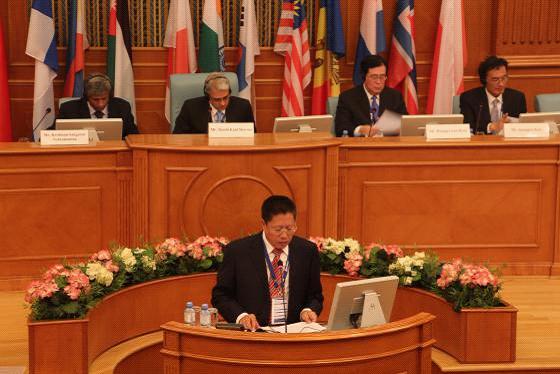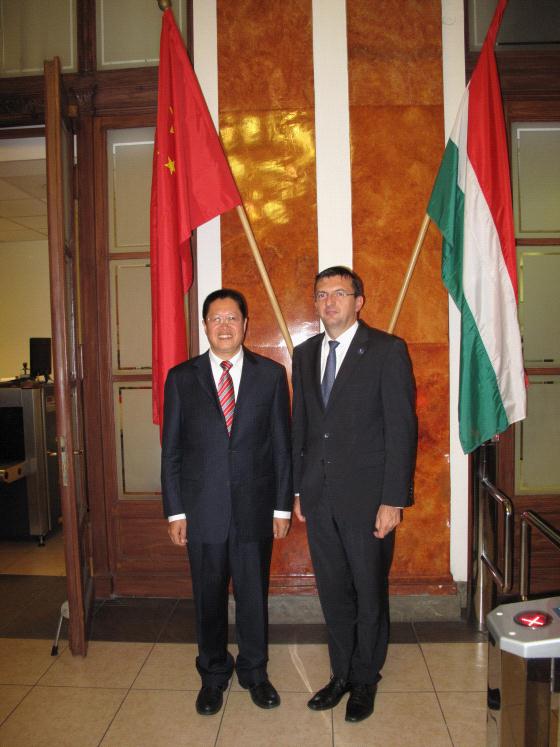From 22 to 28 September, the CNAO’s 6-people delegation, headed by Dr. SUN Baohou, Deputy Auditor General of the CNAO, attended the 47th Governing Board Meeting of ASOSAI and the 2nd ASOSAI-EUROSAI Joint Conference held in Moscow, Russia and visited the State Audit Office of Hungary.

A total of 60 delegates from 14 Governing Board and Audit Committee member SAIs, including observers from IDI, were present at the meeting on 23-24 September 2014. Dr. SUN delivered a report on the involvement of the CNAO, as the representative of ASOSAI, in the activities of INTOSAI Professional Standards Committee. In addition, in the capacity of the Chair and Secretary General of ASOSAI Working Group on Environmental Auditing (WGEA), the Chinese delegation reported to the Governing Board on the work of the ASOSAI WGEA and its future plan. Both reports were approved by the Governing Board.
During the meeting, the heads of SAIs of China, Japan and Korea also met on a routine basis and they had lunch together. By this mechanism, the friendly cooperation among these three SAIs have been further strengthened.
The 2nd ASOSAI-EUROSAI Joint Conference was also held in Moscow, Russian on 25-26 September. Under the main theme of “Lessons learned from the past experiences of adopting the ISSAIs and their future implications”, 88 participants of 19 delegations from the member SAIs of Governing Board of ASOSAI and EUROSAI exchanged their unique experiences in the implementation of the ISSAIs and committed on building a better practice. Dr. SUN presented a country report titled as “Innovative Assimilation of ISSAIs in China's National Auditing Standards”. As a strategic achievement, the Joint Conference approved the Moscow Statement which elaborated the future cooperation between the ASOSAI and EUROSAI.

After the meeting in Moscow, the Chinese delegation went to visit Hungary on 26-28 September. Dr. SUN met with Mr. Laszlo Domokos, the President of the State Audit Office of Hungary. Both sides have exchanged the experiences on audit of United Nations entities, the investigation and evaluation on corruption risks, etc.
